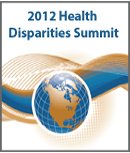A new diversity is growing in America, our aging population will scale in the next generation.
If this conversation is not about you it will be in the future. It is about your family and community those around us who are aging and living longer. A groundswell of elders across our nation means a time when wise, experiential knowledge can be shared especially in this global age of technology and innovation. Furthermore, advances in science shaping medicine and health care create new possibilities to grow, thrive and live well as we age, but we must set our efforts to make this a reality for more people.
We need the wisdom of our elders to empower our nation for a better world.
The fear of getting older including loneliness, frailty, loss of independence can be gripping; paired with fears of illness or navigating a chronic health conditions leaves too many in an overwhelming common place of despair. A reality of financial instability, food and housing insecurity and mobility often moves seniors to places of unrealized potential as well as vulnerability. Yet, empowering social connection with family and community, living out purpose and dreams in your latter years can make all the difference. We are going to have use creative, novel approaches.
Aging is our future means we should recognize people are living longer.
The State of Aging and Health in America 2013 report indicates the growth in the number and proportion of older adults is unprecedented in the history of the
United States. Two factors—longer life spans and aging baby boomers—will combine to double the
population of Americans aged 65 years or older during the next 25 years to about 72 million. By 2030,
older adults will account for roughly 20% of the U.S. population.
Health and well-being across lifespan are important for a
robust economy and nation.
Watch and share:
- In your experience, what are the most empowering parts of aging?
- What should we be thinking about now to prepare our families, communities and country for the next decade to support older Americans and their families?
- How can the government work with the private sector to expand opportunities for older Americans and their families?
-
What are the best ways for multiple generations to stay connected?
-
What are your strategies for taking part in healthy activities?
-
What are ways you would like to get more involved in your community?
- If retired, have you enjoyed new opportunities for volunteerism, business ventures or public service?
-
What advice would you give to someone trying to plan for a secure retirement?
- How has new technology changed your aging experience?
